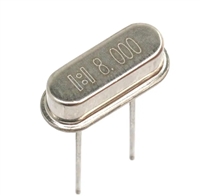AD 746±AC
THERMAL INERTIA AND SELF-HEATING
5MIL
5MIL
5MIL
5MIL
5MIL
5MIL
5MIL
GND
D+
Accuracy depends on the temperature of the remote sensing
diode and/or the internal temperature sensor being at the same
temperature as that being measured. Many factors can affect
this. Ideally, place the sensor in good thermal contact with the
part of the system being measured. If it is not, the thermal
inertia caused by the sensor’s mass causes a lag in the response
of the sensor to a temperature change. In the case of the remote
sensor, this should not be a problem since it is either a substrate
transistor in the processor or a small package device, such as the
SOT-23, placed in close proximity to it.
D–
GND
Figure 23. Typical Arrangement of Signal Tracks
•
•
Try to minimize the number of copper/solder joints
that can cause thermocouple effects. Where copper/solder
joints are used, make sure that they are in both the D+ and
D− path and at the same temperature.
The on-chip sensor, however, is often remote from the processor
and only monitors the general ambient temperature around the
package. How accurately the temperature of the board and/or
the forced airflow reflects the temperature to be measured
dictates the accuracy of the measurement. Self-heating due to
the power dissipated in the ADT7461A or the remote sensor
causes the chip temperature of the device or remote sensor to
rise above ambient. However, the current forced through the
remote sensor is so small that self-heating is negligible. In the
case of the ADT7461A, the worst-case condition occurs when
the device is converting at 64 conversions per second while
Thermocouple effects should not be a major problem as
1ꢀC corresponds to about 200 mV, and thermocouple
voltages are about 3 mV/ꢀC of temperature difference.
Unless there are two thermocouples with a big temperature
differential between them, thermocouple voltages should
be much less than 200 mV.
•
•
Place a 0.1 μF bypass capacitor close to the VDD pin. In
extremely noisy environments, place an input filter
capacitor across D+ and D− close to the ADT7461A. This
capacitance can effect the temperature measurement, so
ensure that any capacitance seen at D+ and D− is, at
maximum, 1,000 pF. This maximum value includes the
filter capacitance, plus any cable or stray capacitance
between the pins and the sensor diode.
ALERT
sinking the maximum current of 1 mA at the
and
THERM
output. In this case, the total power dissipation in the
device is about 4.5 mW. The thermal resistance, θJA, of the
8-lead MSOP is approximately 142ꢀC/W.
LAYOUT CONSIDERATIONS
If the distance to the remote sensor is more than 8 inches,
the use of twisted pair cable is recommended. A total of
6 feet to 12 feet is needed.
Digital boards can be electrically noisy environments, and the
ADT7461A is measuring very small voltages from the remote
sensor, so care must be taken to minimize noise induced at the
sensor inputs. Take the following precautions:
For really long distances (up to 100 feet), use a shielded
twisted pair, such as the Belden No. 8451 microphone
cable. Connect the twisted pair to D+ and D− and the
shield to GND close to the ADT7461A. Leave the remote
end of the shield unconnected to avoid ground loops.
•
Place the ADT7461A as close as possible to the remote
sensing diode. Provided that the worst noise sources, that
is, clock generators, data/address buses, and CRTs are
avoided, this distance can be 4 inches to 8 inches.
Because the measurement technique uses switched current
sources, excessive cable or filter capacitance can affect the
measurement. When using long cables, the filter capacitance
can be reduced or removed.
•
Route the D+ and D– tracks close together, in parallel, with
grounded guard tracks on each side. To minimize
inductance and reduce noise pickup, a 5 mil track width
and spacing is recommended. Provide a ground plane
under the tracks, if possible.
Rev. A | Page 20 of 24






 资料手册解读:UC3842参数和管脚说明
资料手册解读:UC3842参数和管脚说明

 一文带你了解无源晶振的负载电容为何要加两颗谐振电容CL1和CL2
一文带你了解无源晶振的负载电容为何要加两颗谐振电容CL1和CL2

 玻璃管保险丝与陶瓷管保险丝:区别与替代性探讨
玻璃管保险丝与陶瓷管保险丝:区别与替代性探讨

 PCF8574资料解读:主要参数分析、引脚说明
PCF8574资料解读:主要参数分析、引脚说明
